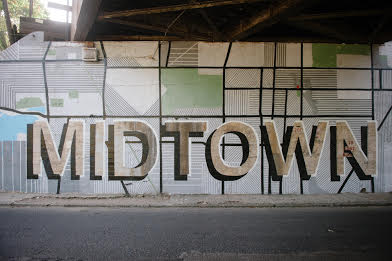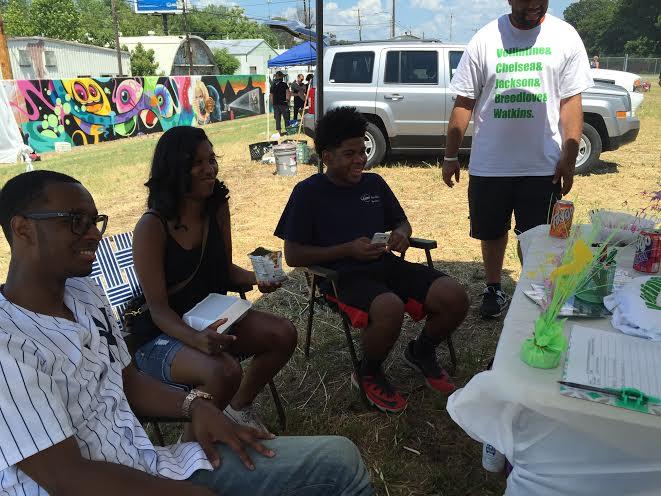311 is a toll-free, non-emergency phone number that people in many cities can call to get information about municipal services (like trash collection), make complaints (like a pothole), or report urgent problems (like a downed power line). Even in cities where a number other than “311” is used, 311 is the most recognized name for this type of phone system. In many places, 311 is now also available as a smartphone app.
Residents are the natural eyes and ears of their neighborhoods, so any system that amplifies their voices straight to city hall gets a gold star from ioby. But what about those residents who want to do more than make a 30-second call to 311 when they notice something amiss on their block? What can neighbors do when they decide it’s not enough to make a report—they also need to take some action?
We’re proud to introduce you to three ioby Leaders who saw opportunities for improvement where they live, and who didn’t wait for someone else (even the government) to step in. While their projects are quite different in nature, they all used ioby’s crowdfunding platform to raise the money needed to make them happen.
[Michalyn Easter hosted a community phone bank session to make service requests to the city and make sure that their community’s concerns are heard and addressed.]
Beyond 311: Three case studies in resident-led change
1) Community phone banking: A super-sized version of 311!
Michalyn Easter raised almost $2,000 for her project Friends of Chelsea Greenline Advocacy Group, which gave North Memphians an official voice in the development of their neighborhood’s new greenway. Following that win, Michalyn began leading a different kind of project to improve health, safety, and quality of life where she lives: a 311 phone bank group. The group meets monthly—over donuts—to make service requests to the city, and submits them all under the same account so they can easily track their success rate. (Last time we checked, they were sitting at an impressive 98 percent.)
Michalyn says: “I think the group has made some people more aware of what we can do about our surroundings. They’re not just standing there anymore, shaking their heads and saying, ‘Oh, the neighborhood’s gone down.’ Together, we’re showing the city that they can’t just take care of the wealthiest areas. In North Memphis, we pay taxes, too, and we care about our quality of life as well.” (Get more ideas from this 311 phone banking slide presentation Michalyn made for new recruits.)
[Miss Lucille didn’t want to wait for the city to act; she took it upon herself outfit her neighborhood intersection with safety features to keep her neighbors safe.]
2) St. Luke’s Pointe Traffic Calming: Being the change we want to see
A grandmother of 19!, Lucille White—known as Miss Lucille to the Cleveland students who love her—lost two nieces to hit-and-runs. She became a crossing guard to help protect other vulnerable pedestrians from reckless drivers, and she raised money on ioby to outfit her intersection with traffic cones, roll-out speed bumps, sidewalk chalk, planters, and signage.
Miss Lucille says: “It’s a dedication to life, for me. … It’s about helping those who are especially at risk—the young, the elderly, the disabled—cross safely, and asking them about their day as they go. … I talk to them about positive things, and how good they’re doing. You have kids that come to school at 7:15 in the morning, and they’re walking in the dark. Who’s watching out for them? Nobody. I’m their eyes.”
 [When Betsy Robinson saw an unsightly wall in her neighborhood, she didn’t want to wait for someone else to do something about it. She called up her neighbors and they got to work!]
[When Betsy Robinson saw an unsightly wall in her neighborhood, she didn’t want to wait for someone else to do something about it. She called up her neighbors and they got to work!]
3) Cooper/Higbee Underpass Mural & Central Ave Underpass Mural: From “somebody should…” to “why not me?!”
Betsy Robinson saw herself as a nurse practitioner—not a community organizer or local leader. When her family moved to Memphis, she would remark to her kids about the ugly underpass walls they had to walk by to get to their neighborhood park. When she wondered aloud to a friend why someone didn’t paint a couple of murals there, her friend wisely replied, “So do it!” Not long after, Betsy was the proud co-parent of not one but two beautiful murals that sparked media attention, employed local artists, and lifted her neighborhood up.
Betsy says: “I honestly never thought I would do anything like this, ever. But I went about it hoping that my kids would see that I’m not just complaining about the place I live—I’m actually able to do something about it. I wanted them to see that we have the ability to make a change. There’s a lot of things I didn’t know I was capable of, in doing this.”
***
Are you ready to move beyond 311 and take on-the-ground action to make your neighborhood better? Tell us your idea! We can help you raise the money—and publicity, and buy-in, and volunteers—you need to make it happen.
Further reading: Peruse a brief history of 311 in Government Technology

